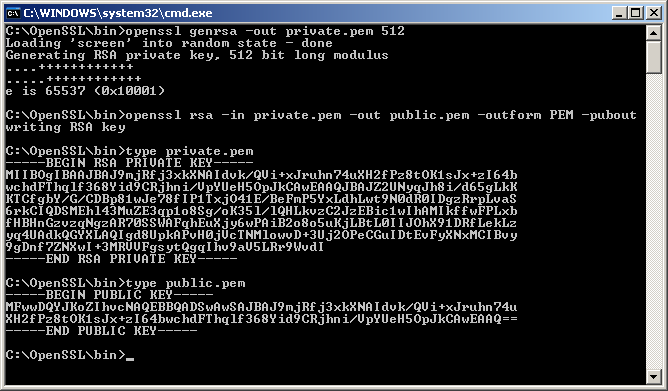Openssl Generate Seperate Private Key File
- Generate Rsa Key Openssl
- Openssl Generate Separate Private Key File Pdf
- Openssl Generate Separate Private Key File Format
Sometimes you have to use 3rd party applications/tools for certificate request generation. Some of them uses Windows certificate store to store request and a corresponding private keys, but others generates a request file and separate file with unencrypted private key. As a common example are makecert.exe and openssl.exe tools. However, OpenSSL has already pre-calculated the public key and stored it in the private key file. So this command doesn't actually do any cryptographic calculation - it merely copies the public key bytes out of the file and writes the Base64 PEM encoded version of those bytes into the output public key file. Viewing the key elements. A certificate.crt and privateKey.key can be extracted from your Personal Information Exchange file (certificate.pfx) using OpenSSL. Follow this article to create a certificate.crt and privateKey.key files from a certificate.pfx file.
The following instructions will guide you through the CSR generation process on Nginx (OpenSSL). To learn more about CSRs and the importance of your private key, reference our Overview of Certificate Signing Request article. If you already generated the CSR and received your trusted SSL certificate, reference our SSL Installation Instructions and disregard the steps below.
1. Log in to your server’s terminal.
You will want to log in via Secure Shell (SSH).
Generate Rsa Key Openssl
2. Enter CSR and Private Key command
Generate a private key and CSR by running the following command:
Here is the plain text version to copy and paste into your terminal:
Note:Replace “server ” with the domain name you intend to secure.
3. Enter your CSR details
Enter the following CSR details when prompted:
- Common Name: The FQDN (fully-qualified domain name) you want to secure with the certificate such as www.google.com, secure.website.org, *.domain.net, etc.
- Organization: The full legal name of your organization including the corporate identifier.
- Organization Unit (OU): Your department such as ‘Information Technology’ or ‘Website Security.’
- City or Locality: The locality or city where your organization is legally incorporated. Do not abbreviate.
- State or Province: The state or province where your organization is legally incorporated. Do not abbreviate.
- Country: The official two-letter country code (i.e. US, CH) where your organization is legally incorporated.
Note: You are not required to enter a password or passphrase. This optional field is for applying additional security to your key pair.
4. Generate the order
Locate and open the newly created CSR in a text editor such as Notepad and copy all the text including:
Openssl Generate Separate Private Key File Pdf
Note 1: Your CSR should be saved in the same user directory that you SSH into unless otherwise specified by you.
Note 2: We recommend saving or backing up your newly generate “.key ” file as this will be required later during the installation process.
Openssl Generate Separate Private Key File Format
Return to the Generation Form on our website and paste the entire CSR into the blank text box and continue with completing the generation process.
Please email the signed agreement together with ashort description of your organization to our sales team and we will contact youas soon as possible. It has to be signed bya senior person that can bind your organization to the terms of the agreement, e.g., anIT director, dean or professor.

Upon generating your CSR, your order will enter the validation process with the issuing Certificate Authority (CA) and require the certificate requester to complete some form of validation depending on the certificate purchased. For information regarding the different levels of the validation process and how to satisfy the industry requirements, reference our validation articles.
After you complete the validation process and receive the trusted SSL Certificate from the issuing Certificate Authority (CA), proceed with the next step using our SSL Installation Instructions for Nginx using OpenSSL.
